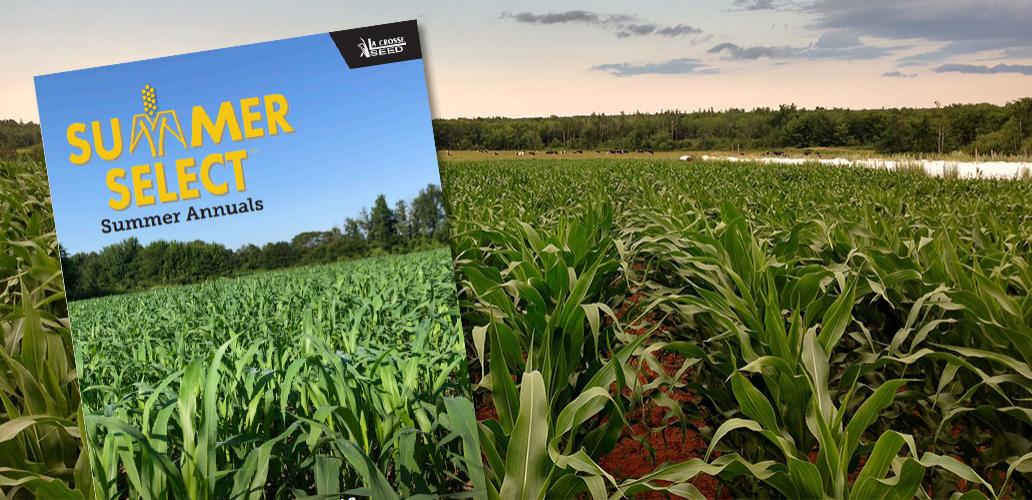Forage First Guide I Summer Select Guide
Greater Value. Good Move. Yield and quality matter. But there’s more. Our goal is to provide a higher standard for forage to maximize ROI– while keeping your wallet in mind. We take pride in delivering proven products that increase the bottom line at a good price.

Sorghum x Sudangrass cover crop is a summer annual grass with high biomass production and nitrogen scavenging properties
CHARACTERISTICS:
Non-Forage Benefits:
1 = Poor; 5 = Excellent
Compaction Alleviation: 4
Weed Suppression: 5
Biomass Production: 5
Erosion Control: 4
Disease/Pest Control: 4
Pollinator/Beneficials: 3
P & K Cycling: 3
Ease of Establishment: 4
Nitrogen Fixer/Scavenger: Scavenger
Nutritional Value:
Values Vary Greatly Depending on Maturity
Crude Protein: 16
NEL¹ Mcal/lb.: .70
ADF%²: 29
NDF%³: 55
TDN: 55
DM Tons/Acre: 5-8
Days to First Harvest: 45-70
Days to Next Harvest: 30
¹- Net Energy for Lactation = Energy available after subtracting digestive and metabolic losses
²- Acid Detergent Fiber = Low values mean more digestible
³- Neutral Detergent Fiber = Low values mean cows can eat more
Ranking (Good, Better, Best):
Graze: Good
Baleage: Better
Chop: Best
SEEDING:
Planting Time:
May-July
Seeding Rate:
Mono (lbs./acre): 25-70
Mix (lbs./acre): 5-20
Forage (lbs./acre): 25-70
Aerial (lbs./acre): NR
Seeding Info:
Carbon/Nitrogen Ratio (C:N): Leftover stalks- 80:1
Seeding Depth (in./with drill): 3/4-1½
Seeds/lb.: 21,000
Bulk Density (lbs./ft.³): 45
Aerial Application Rate: Not Rated
Germination Soil Temp.: 65 F
USDA Hardiness Zone: Frost
Days to Emergence: 10
MANAGEMENT:
Nitrate Toxicity is common when fertility or manure applications are followed by a period of drought or stress. Cut plants do not lessen in their nitrate levels as they cure. If high levels are suspected, forage should be tested for a period of a few weeks until levels subside. Though often linked to summer annual grasses, increased nitrate levels can show up in most cover crops and forages.
- Nitrates are concentrated more in the lower stalk– raising cutting height can reduce the risk
- When a stressful drought precedes a moisture event, it is recommended to delay harvest by 1-2 weeks
- Consider split applications of nitrogen (especially useful on summer annuals) to decrease nitrate accumulations
Prussic Acid poisoning can occur when feeding forage sorghums after periods of drought or other stress, including frost. Toxic levels dissipate usually after 2-3 weeks and will further decrease when ensiled. Prussic acid is most concentrated in new growth, so sorghum forages should not be grazed until they are at least 18 in. tall. Storing hay or silage for at least 30 days generally dissipates the concern.
- Best suited for summer/late summer seeding to take advantage of growing-degree-units for quick growth
- Large root mass produced as it’s needed for withstanding heat and drought
- Sown at even higher rates when used as forage, it makes a great weed suppressor
- Well suited for multiple harvest systems
- Excellent re-growth, drought tolerance and feed value

.png)
.png)


.png)










